The 2012 MacBook Pro Review
by Vivek Gowri on July 18, 2012 2:00 PM EST- Posted in
- Mac
- Apple
- MacBook Pro
- Laptops
- Notebooks
From a performance standpoint, the 2012 MBP lines up basically where we would expect it. My tester was the high-spec SKU with the same 2.6GHz i7-3720QM, 8GB of DDR3, and 1GB GT 650M as Anand’s Retina MacBook Pro evaluation unit, with the primary hardware difference being the 750GB mechanical hard drive in place of the Samsung PM830-based SSD in the rMBP. Performance matched up pretty close, with the MBP being just a tick behind the rMBP in most of our benchmark suite. And with the performance deltas we're talking about, it's really almost like splitting hairs.
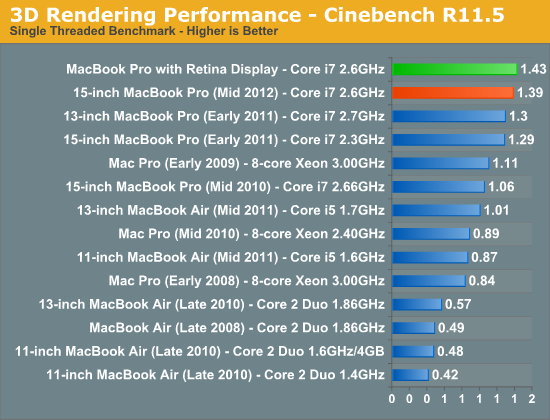

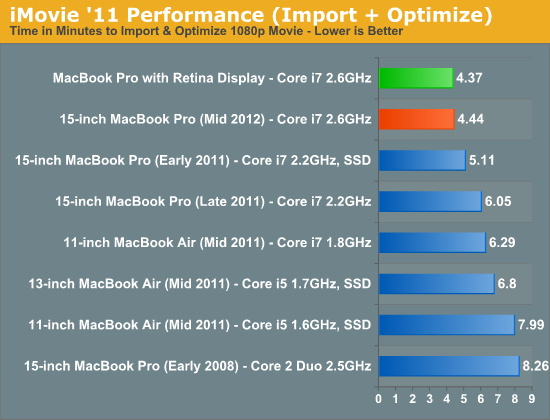

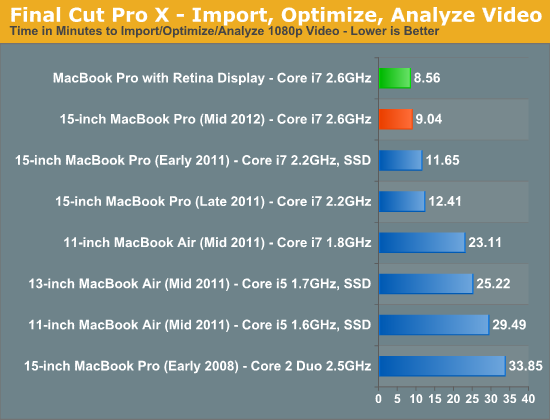
It appears that the i7's Turbo mode is less aggressive in the MBP versus the Retina, possibly due to the revised cooling system that the Retina model has. The 2012 MBP retains the same thermal design as the 2011 model, so it's unsurprising to see that Apple is being more cautious with it.
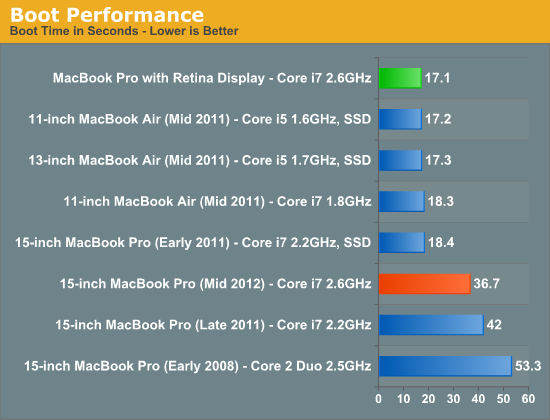
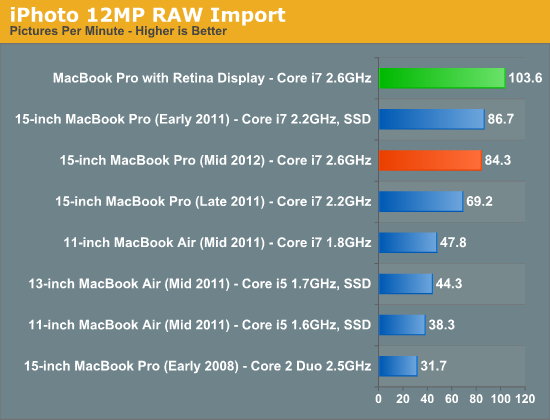
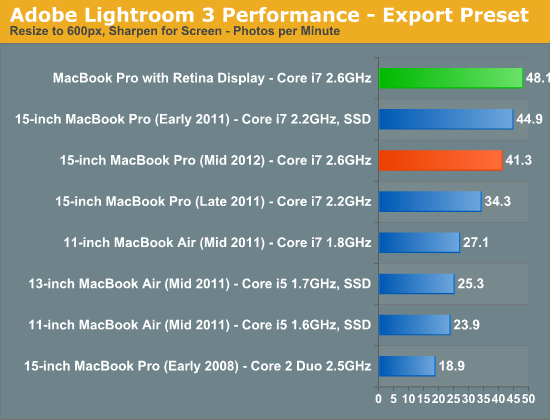

The SSD-based Retina obviously has faster boot times and performs significantly better in any disk-based activity. Based on my limited experiences with the Retina, it really feels substantially more responsive. Our usual recommendation from the last couple of years stands here too: if you're buying a new MacBook Pro, your first upgrade should be to add an SSD.
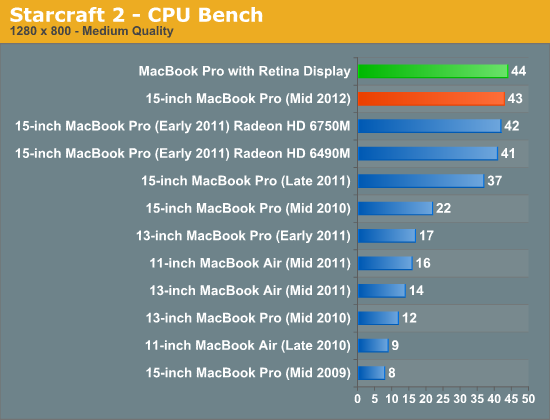
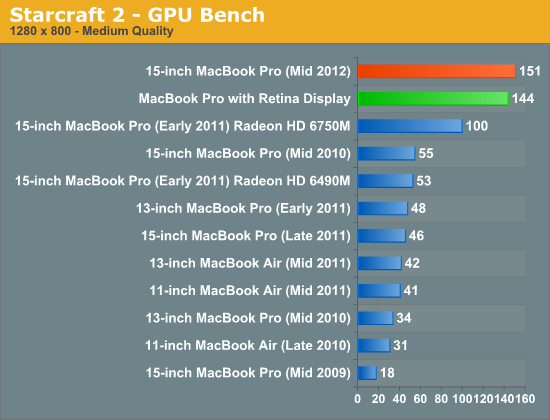
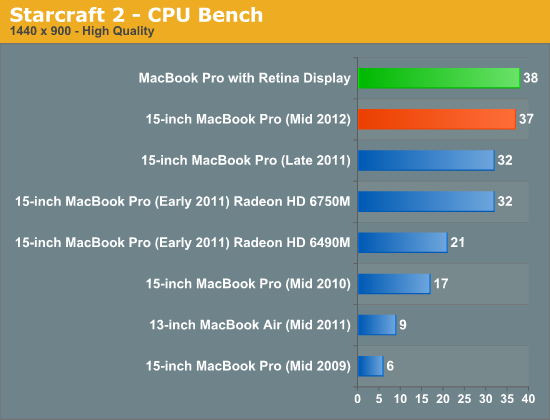
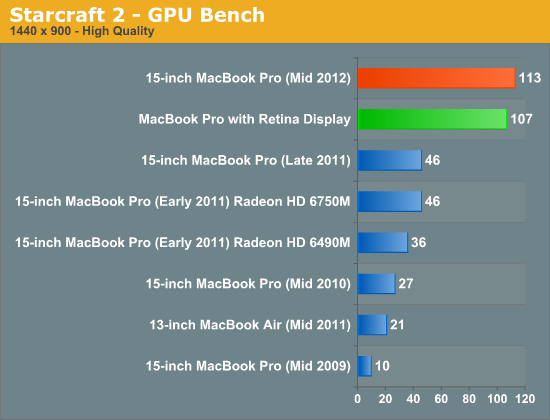
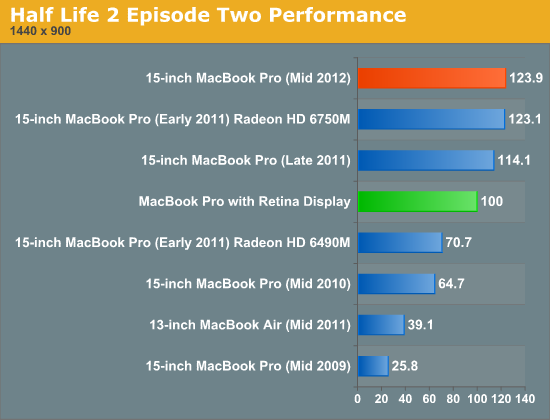
GPU performance is substantially improved over the 2011 MBP, with the GT 650M outpacing both the HD 6750 and 6770, to say nothing of the HD 6490 in the early 2011 Pro. We saw roughly equivalent performance with the rMBP again, with the MBP maintaining a slight edge over the Retina, but again with a margin of less than 5%.
We took a look at performance over time, and as expected, Ivy Bridge and Kepler do a really good job of minimizing heat buildup over time and the corresponding amount of throttling that occurs. Through 40 runs of our Half-Life 2 test (at native res with maxed out settings), I ended up with nearly identical numbers the entire way through, with a very slight downward trend emerging (the delta between the average of runs 2 through 10 was a bit under 1% better than the average of runs 32 through 40). It's pretty much a flat line all the way across, the new chips really let the MBP run at significantly lower temperatures. Using it versus a Core 2 or SNB MacBook Pro, it noticeably doesn't get anywhere near as hot to the touch in day to day use.
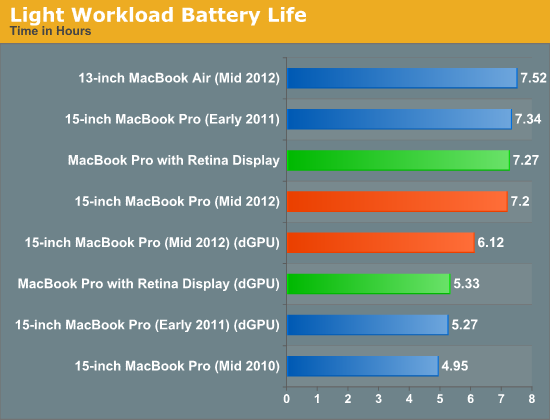
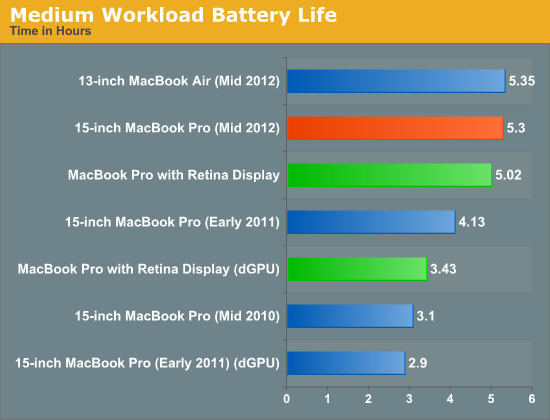
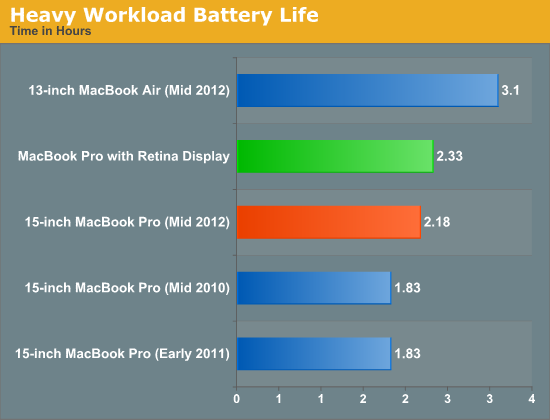
Battery life is pretty solid – we got a bit over 7 hours in our light web browsing test (with dynamic GPU switching on), a hair over 6 with dynamic GPU switching off (forcing the GPU to stay on), close to 5.5 hours in our medium-heavy browsing workload, and a bit over 2 hours in our brutal, heavy use case test (which adds a 1MB/s file transfer and a looping 1080p video to our heavy browsing test). Apple quotes 7 hours of “normal” use, and that’s about right based on my standard usage – if you use your notebook for light browsing and word processing with medium levels of brightness, you’ll get at least 7 hours if not a bit more. Obviously, once you start hitting the dGPU hard, it’ll die pretty quickly, but at least GPU efficiency has improved enough that just leaving the GPU on in light workloads doesn’t run down the battery too much.


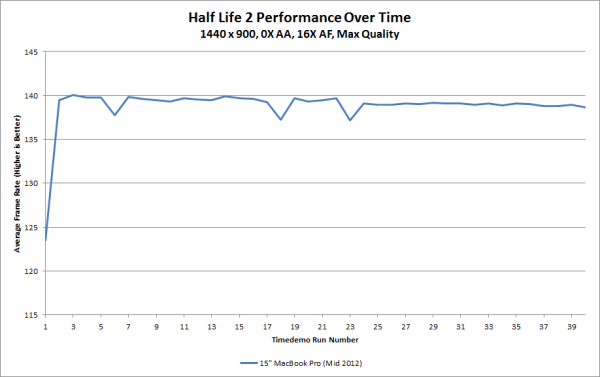








132 Comments
View All Comments
sambamac - Thursday, July 19, 2012 - link
I've been thinking a lot about it. Ok, the retina is a fine screen. But I will go for the 2012 non retina non-glare 1650x1050, because I will put a 750 7200 rpm (only a additional 56$) and an extra 256 SSD for the system ( I will separate the system from the data ). When the 16GB Modules will be available I will upgrade the memory to 32Gb. I really work on an external monitor. 15" is just too small to do edit or retouch fotos. I really need the portable solution, because I travel a lot. And the possible 32Gb will help a lot to boost photoshop work based on dozens of layers.Freakie - Thursday, July 19, 2012 - link
16GB modules wont ever come for DDR3 in the 204 pin form factor (laptop), so give your hopes up now. If you really want the best photoshop performance then you should be switching to a Windows laptop especially since it's easy to put 32GB on a Windows laptop, create a RAMdisk with a good chunk of that and then put your Photoshop Scratch Disk directory on it. (instant 5GB/s transfer rate on your scratch disk by using your RAM instead of a mechanical or solid state drive). Or if you are dead-set on using OSX then you can easily hackintosh OSX on the laptop and still have the more powerful hardware.sambamac - Thursday, July 19, 2012 - link
Why you know that 16GB modules won't ever come? Is there a technical problem?Yeah, it's a good idea with the Ram Disk....
thanks for input!
Freakie - Friday, July 20, 2012 - link
Yeah basically. RAM follows standards and what-not, which means the people who make the RAM have to follow certain guidelines if their want to be able to use the DDR3 label for the RAM. That way RAM is as compatible as possible. As it stands, the DDR3 standards don't really allow 16GB sticks for laptops because the sticks are too small. They can't do 3D stacking of the memory without being out of spec, to my knowledge. And most RAM is still manufactured on large processes like 48-60nm and so they can't just pack more in on the area they have. We probably wont see 16GB sticks for laptops until DDR4.sambamac - Friday, July 20, 2012 - link
Ok, I see! Thank you for these explanations!arkweld - Thursday, July 19, 2012 - link
I just made the same decision. Anandtech opts for the rMBP because it's better value? Really? What a ludicrous statement.For $2300 you get an MBP with hi-res, optical drive, ethernet, FireWire, more storage capacity, expandability and the exact same battery life, processor and RAM as the $2800 rMBP. A unit which has the only advantage of a arguably better display, negligible perfomance increase and a half-pound weight reduction. Anandtech opt to pay $500 more for less capability.
If you want an SSD to boost your performance you can add one to an MBP at any time in any capacity.
If the future is removing features for a screen of dubious value, then we are going backwards. Especially when you are paying $500 for the privilege.
The0ne - Thursday, July 19, 2012 - link
Yea, your consideration for the type of work you do is inadequate. You should be considering Windows laptop for this. You want both the CPU performance and the GPU to handle the 2D/3D side of things. Sure it may not be as light, or any other reasons but you get your work done fast and "easy". Not entirely sure on the easy word but meh :)sambamac - Friday, July 20, 2012 - link
And which system is adequate?jcannon1018 - Thursday, July 19, 2012 - link
Any ideas on how the lower end model would graphically compare to the high-end model? Running at native 1440x900 with Diablo 3, 512 vs 1gig, huge difference?Deepcover96 - Thursday, July 19, 2012 - link
I went back and forth on which one I would get. The Ethernet port almost pushed me towards the Pro, but the better display on the Air made up my mind. Like you said, The Air and the rMBP feel like the future.